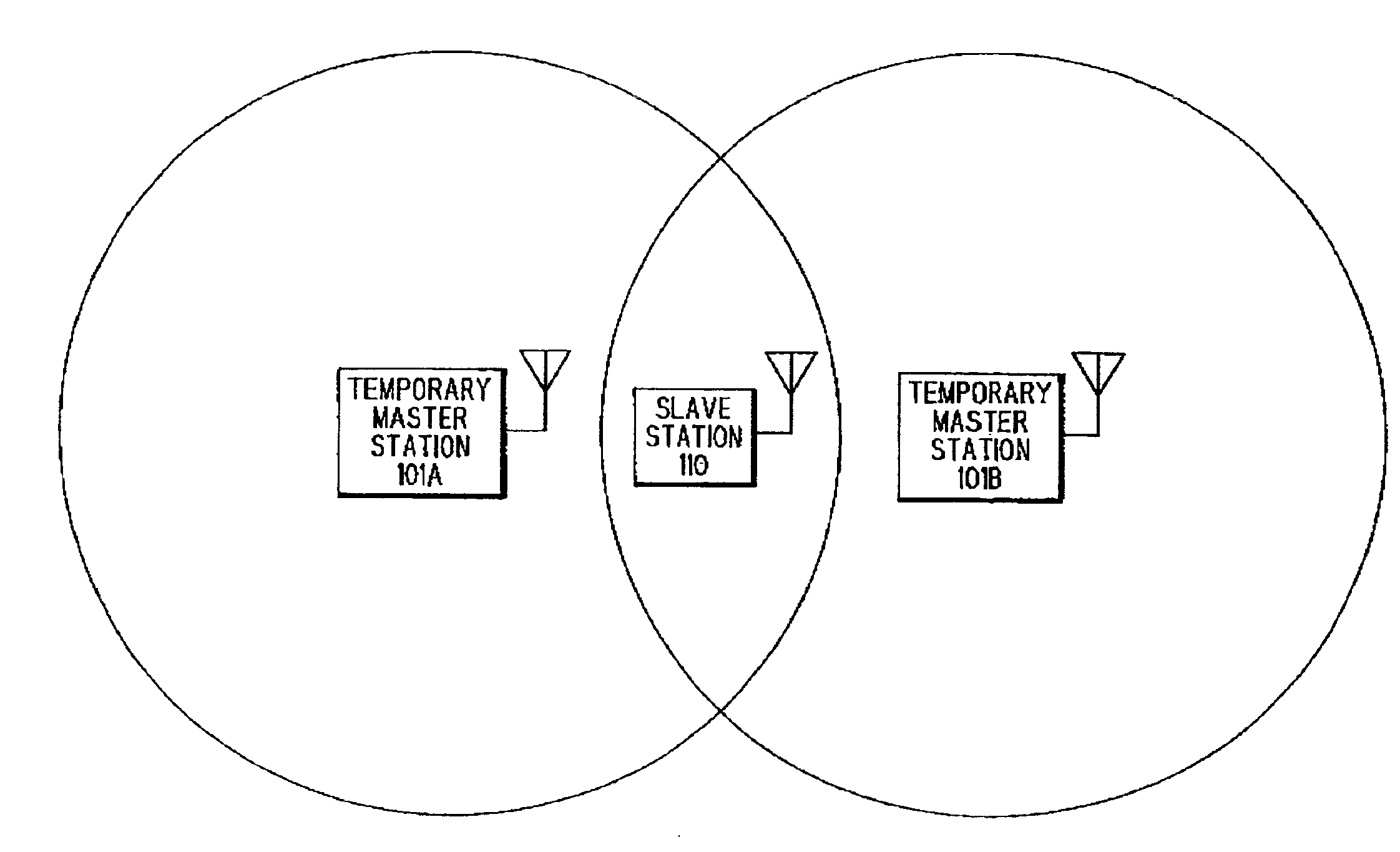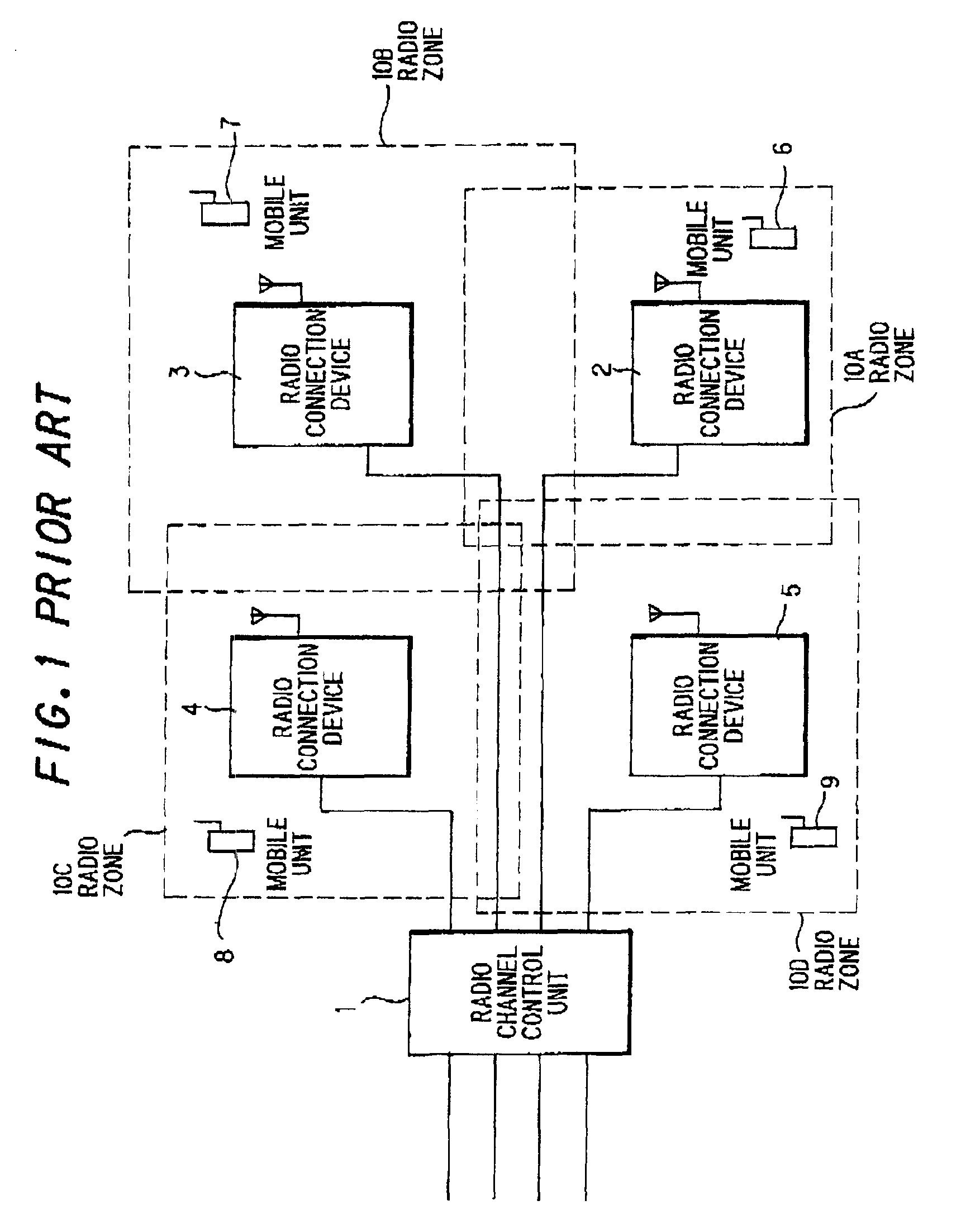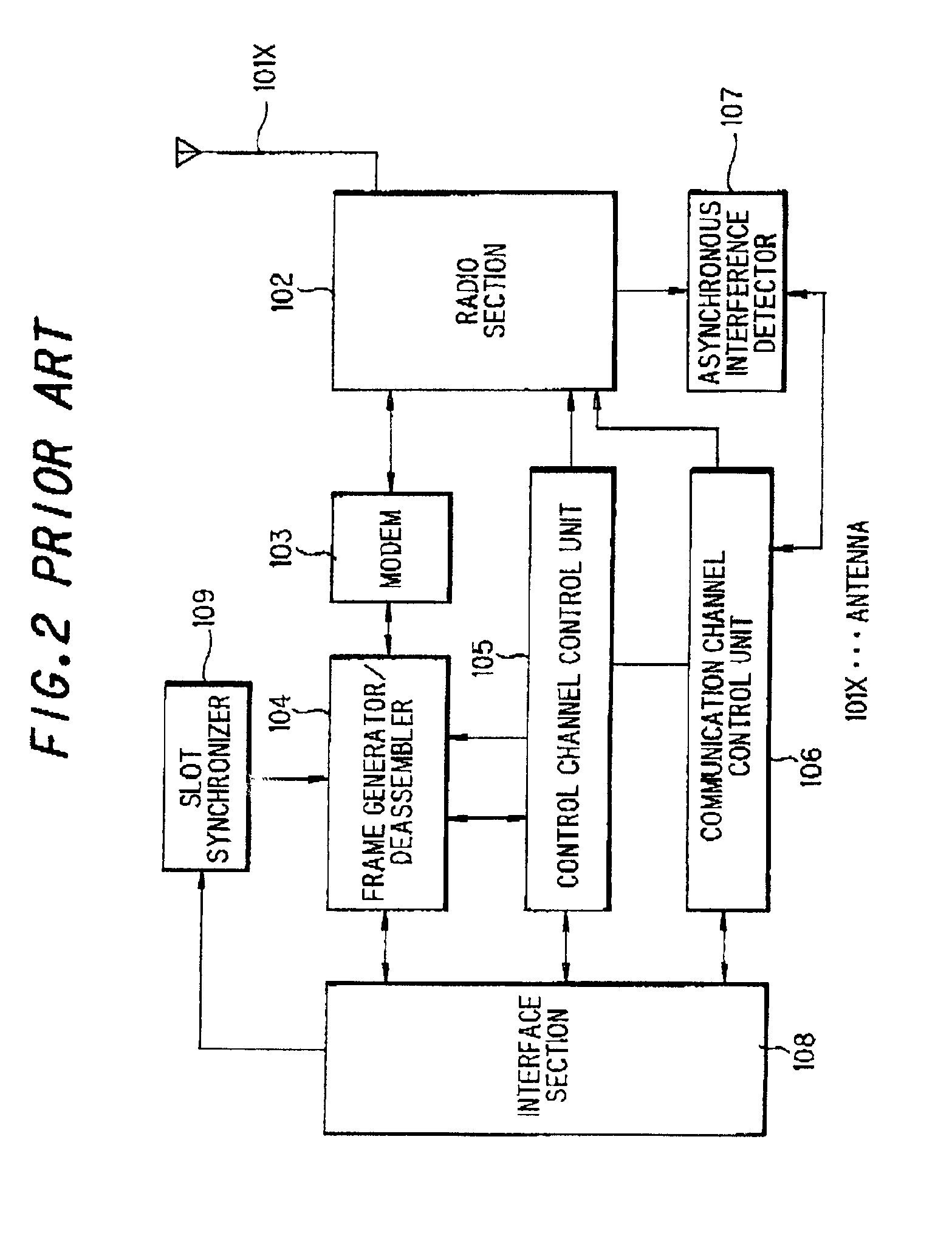Asynchronous interference avoiding method and asynchronous interference avoiding system
a technology which is applied in the field of avoiding system and avoiding method of avoiding asynchronous interference, can solve the problems of judging the occurrence of interference, unreceiving the signal from the terminal side, and prior art techniques, and achieve the effect of avoiding interference reliably
- Summary
- Abstract
- Description
- Claims
- Application Information
AI Technical Summary
Benefits of technology
Problems solved by technology
Method used
Image
Examples
second preferred embodiment
(Second Preferred Embodiment)
[0147]FIG. 12 is a diagram showing an embodiment of the state of synchronization in an asynchronous interference avoiding system according to a second preferred embodiment of the invention. The construction of the asynchronous interference avoiding system according to the second preferred embodiment of the invention is the same as that of the first preferred embodiment of the invention, and, thus, the explanation thereof will be omitted.
[0148]In the operation in and after the step 417 shown in FIG. 9, a search for the highest-receive field strength slot is carried out, followed by the send of an interference detection D1 packet through a send slot corresponding to this slot. On the other hand, as shown in FIG. 12, the interference detection D1 packet is sent through all the slots. This can eliminate the need to search for the highest-receive field strength slot. The explanation of other reference characters will be omitted.
[0149]By virtue of this operati...
third preferred embodiment
(Third Preferred Embodiment)
[0150]FIG. 13 is a diagram showing an embodiment of the state of synchronization in an asynchronous interference avoiding system according to a third preferred embodiment of the invention. The construction of the asynchronous interference avoiding system according to the third preferred embodiment of the invention is the same as that of the first preferred embodiment of the invention, and, thus, the explanation thereof will be omitted.
[0151]In the step 418 shown in FIG. 9, when the highest-receive field strength slot was obtained, an examination is made on whether or not the unique word 201 is detected (not shown).
[0152]If the unique word has not been detected, as shown in FIG. 13, the position of the slot is staggered by “1” bit before and an examination is again made on whether or not the unique word 201 is detected. This operation is repeated in a region, where an electric field can be detected, to examine whether or not the unique word 201 is obtained...
PUM
 Login to View More
Login to View More Abstract
Description
Claims
Application Information
 Login to View More
Login to View More - R&D
- Intellectual Property
- Life Sciences
- Materials
- Tech Scout
- Unparalleled Data Quality
- Higher Quality Content
- 60% Fewer Hallucinations
Browse by: Latest US Patents, China's latest patents, Technical Efficacy Thesaurus, Application Domain, Technology Topic, Popular Technical Reports.
© 2025 PatSnap. All rights reserved.Legal|Privacy policy|Modern Slavery Act Transparency Statement|Sitemap|About US| Contact US: help@patsnap.com



